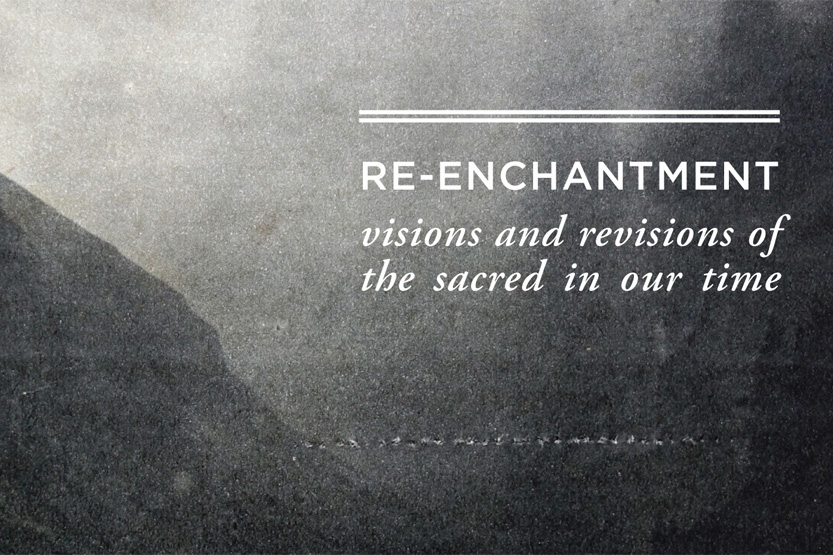The Hedgehog Review, an interdisciplinary journal published by the University of Virginia’s Institute for Advanced Studies in Culture, devotes its fall issue to “visions and revisions of the sacred in our time.”
“Re-enchantment: What is it? Who wants it?” asks editor Jay Tolson in his introduction to the issue’s overarching theme.
Citing Max Weber’s idea of “disenchantment” – the argument that religion was being displaced in the modern world by the forces of science and reason – Tolson points to evidence and arguments that have challenged the great German sociologist’s thesis.
What we are witnessing, Tolson suggests, is not so much a return to “old-time religion” (if it ever disappeared) as new formulations of the sacred, often entailing “complex interconnections among things once considered separate and distinct.”
Some of those new formulations are explored in the issue’s seven thematic essays.
In “Soul Survivor: Metaphysics as Intraphysics in the Age of Re-enchantment,” Dominic Green of Boston College combines recent survey data with a short intellectual history of modern spirituality to show that “emergent, reformulating” conceptions of the soul have powerful purchase in contemporary America.
“Our societies are not secularizing so much as pluralizing,” argues UVA religious studies professor and IASC faculty fellow Charles Mathewes in his probing critique of philosopher Peter Sloterdijk’s reductive efforts to explain modern religion as a regime of self-transformative “practices.”
In “Re-enchantment and Iconoclasm in an Age of Images,” art historian and philosopher Anna Marazuela Kim, an associate fellow at the Institute for Advanced Studies in Culture and Andrew W. Mellon Postdoctoral Fellow at the Courtauld Institute of Art, London, explores not only the debates over the power of images, but also the violence – often in the name of religion – occasioned by some of them.
“We tell many stories about modernity,” says Matthew Scherer, a political philosopher at George Mason University, in his essay, “Nietzsche’s Smile: Modern Conversion and the Secularity Craze.” Modern secularity may present “a stark and simple surface of a freestanding, self-reflective rationality,” Scherer notes, “but this surface conceals contradictory depths, including persistent attachments to an unacknowledged but inescapable religious past.”
In “Sacred Reading: From Augustine to the Digital Humanists,” Chad Wellmon, UVA German studies professor and Institute for Advanced Studies in Culture faculty fellow, explores some of the oldest understandings of the meaning and purpose of reading to question whether the project of digital humanists like Franco Moretti represents a disenchantment or re-enchantment of both reading and the text itself.
“We Have Never Been Disenchanted,” argues Villanova University humanities professor Eugene McCarraher. The enchantments of Mammon in modern capitalism have simply perverted “both the sacramental character of the world and our consciousness of that quality.” Invoking Simone Weil and certain Romantics, McCarraher seeks to expose the enchantments of capital and replace them with a “sacramental alternative.”
Finally, in “Seven Ways of Looking at Religion,” Benjamin Schewel, an associate fellow at the Institute for Advanced Studies in Culture and fellow at the Centre for Religion, Conflict, and the Public Domain at the University of Groningen, the Netherlands, assesses the most influential intellectual accounts of religion and religious change in order to arrive at a fuller understanding of the place of the sacred in our time. By attempting to understand each approach, Schewel says, we can integrate the insights of each “into a broader narrative whole.”
Three free-standing essays in this issue continue The Hedgehog Review’s exploration of today’s cultural complexities.
In “Escaping the Matrix,” historian Wilfred McClay makes the case for the liberal arts as a way of both tying us to tradition and freeing us from unquestioned assumptions.
Washington University legal scholar John Inazu outlines a “confident pluralism” that will help Americans work across deep ideological divides even while holding to their beliefs.
And finally, Helen Andrews, a policy analyst at the Centre for Independent Studies in Australia, tells how the remarkable success of Alcoholics Anonymous has left many other institutions, including religious ones, with a case of “AA Envy.”
To subscribe, visit www.hedgehogreview.com. The journal is for sale ($12) at select Barnes & Noble bookstores, the University of Virginia main bookstore and online.
Media Contact
Article Information
November 3, 2015
/content/hedgehog-review-ponders-sacred-space-modern-life

